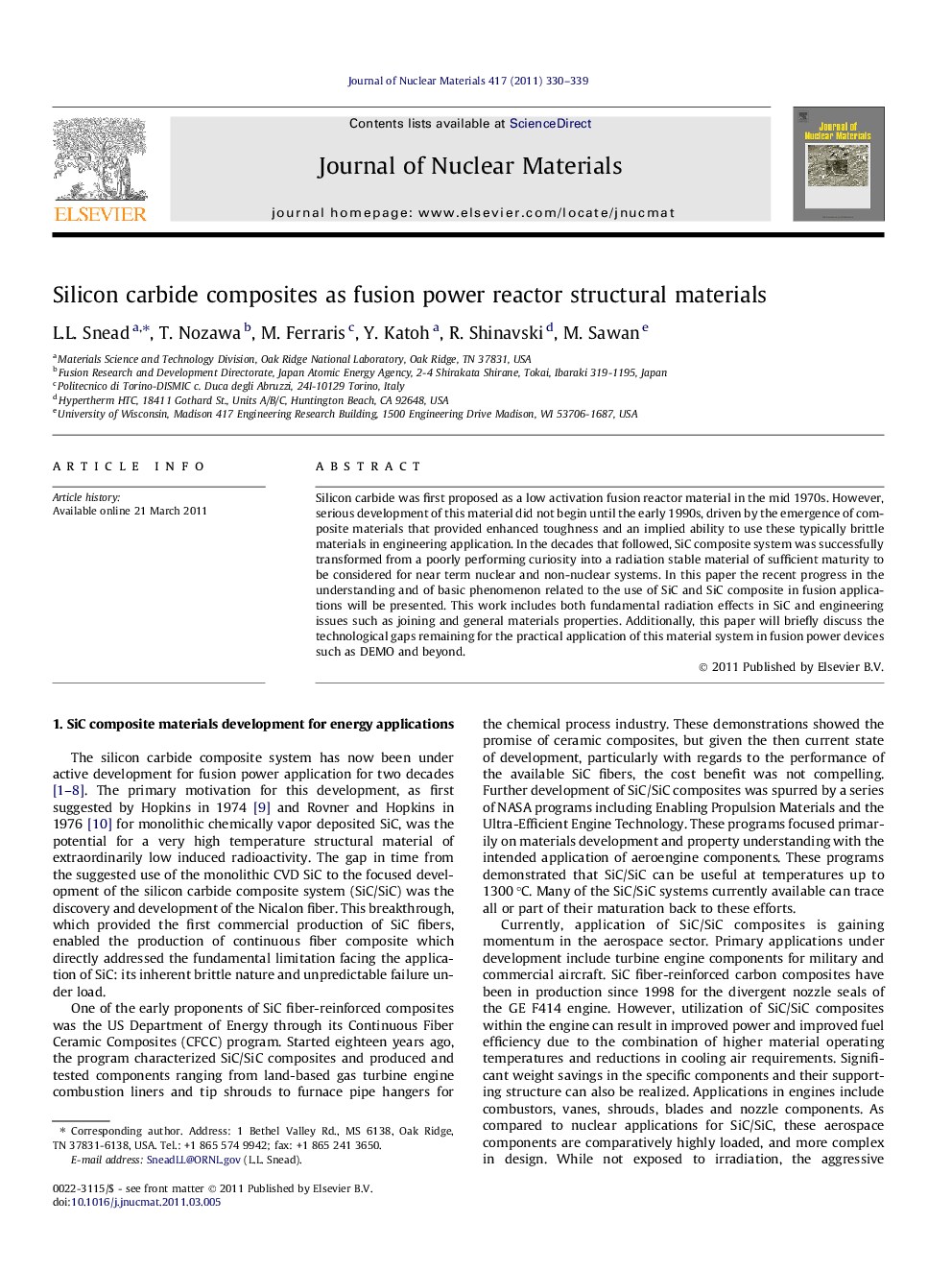| Article ID | Journal | Published Year | Pages | File Type |
|---|---|---|---|---|
| 1566637 | Journal of Nuclear Materials | 2011 | 10 Pages |
Abstract
Silicon carbide was first proposed as a low activation fusion reactor material in the mid 1970s. However, serious development of this material did not begin until the early 1990s, driven by the emergence of composite materials that provided enhanced toughness and an implied ability to use these typically brittle materials in engineering application. In the decades that followed, SiC composite system was successfully transformed from a poorly performing curiosity into a radiation stable material of sufficient maturity to be considered for near term nuclear and non-nuclear systems. In this paper the recent progress in the understanding and of basic phenomenon related to the use of SiC and SiC composite in fusion applications will be presented. This work includes both fundamental radiation effects in SiC and engineering issues such as joining and general materials properties. Additionally, this paper will briefly discuss the technological gaps remaining for the practical application of this material system in fusion power devices such as DEMO and beyond.
Related Topics
Physical Sciences and Engineering
Energy
Nuclear Energy and Engineering
Authors
L.L. Snead, T. Nozawa, M. Ferraris, Y. Katoh, R. Shinavski, M. Sawan,
